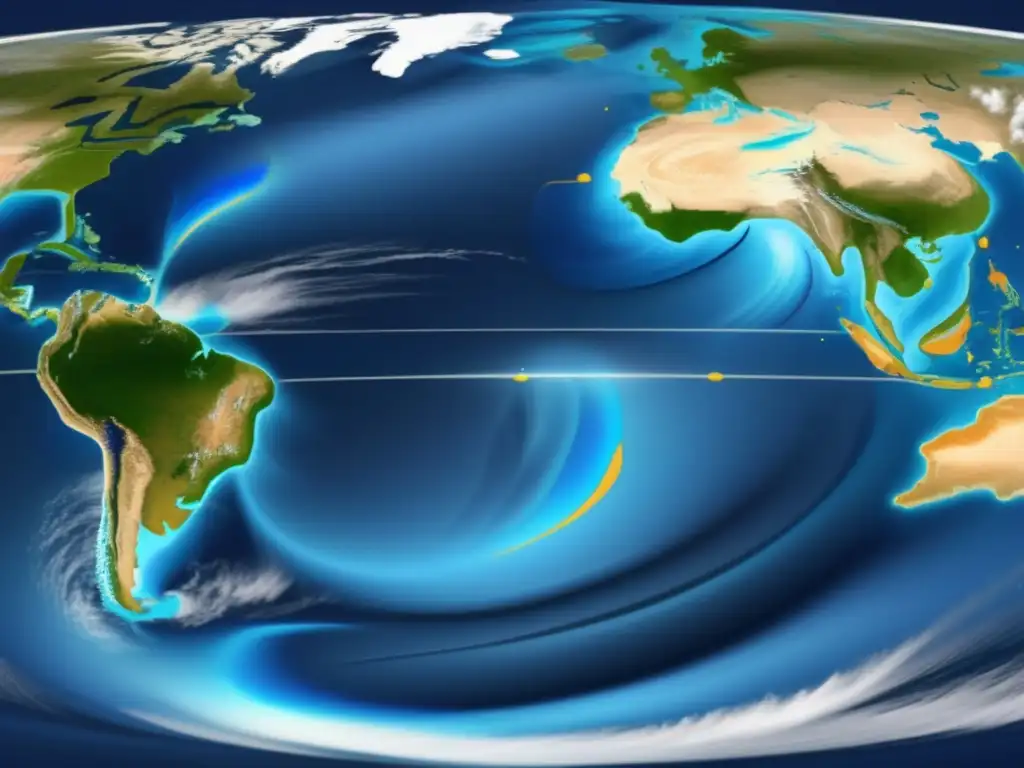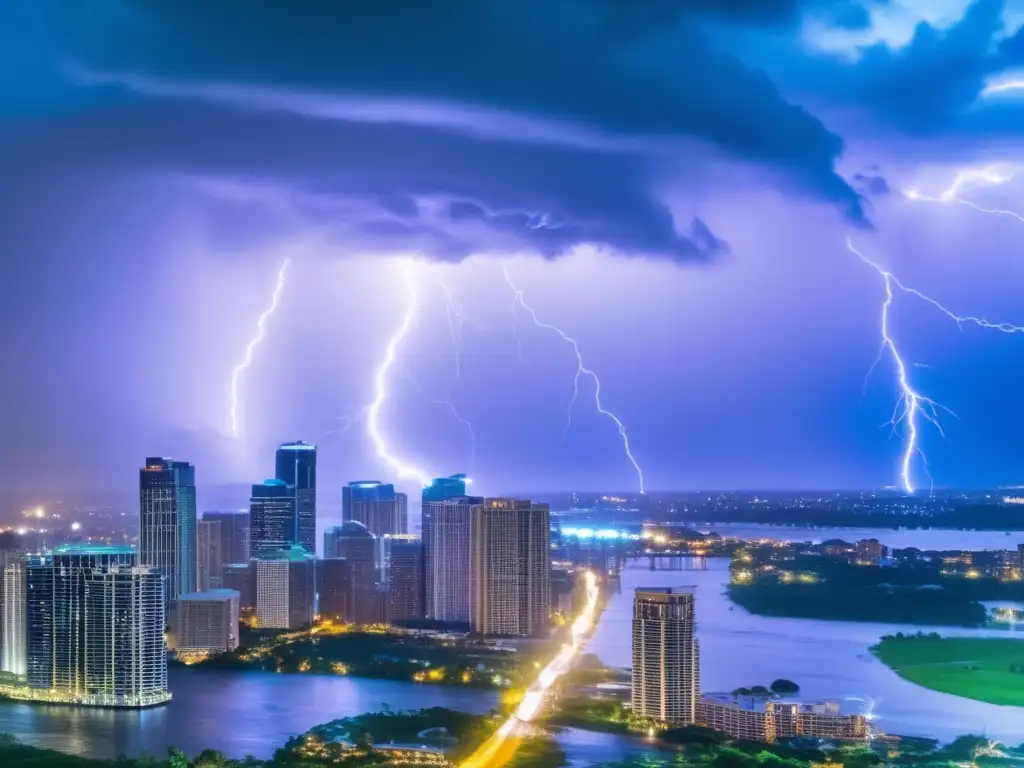The Factors That Determine A Hurricane's Path

The Factors That Determine a Hurricane's Path
Introduction
Hurricanes are powerful and destructive natural forces that impact many people living in coastal areas around the world. Understanding the path of a hurricane is crucial for people living in areas prone to hurricanes, as it can help them prepare and evacuate if necessary. In this article, we will explore the different factors that determine a hurricane's path, providing valuable knowledge for those living in hurricane-prone areas.
Hurricane Formation and How it Affects the Path

The first factor that determines a hurricane's path is its formation. Hurricanes are tropical cyclones that form near the Equator over warm ocean water. The warm water provides the energy needed for a hurricane to develop and grow. As warm air rises over the warm water, it creates a low-pressure zone that draws in more warm moist air from surrounding areas. The rotation of the Earth then causes the spinning motion that gives rise to the cyclone.
The path of a hurricane is also affected by the strength of the storm. Stronger hurricanes tend to move faster and can often deviate from their predicted path, making it difficult for forecasters to accurately predict where they will make landfall. Hurricane strength is measured using the Saffir-Simpson Hurricane Wind Scale, which categorizes hurricanes from Category 1 (weakest) to Category 5 (strongest).
The Coriolis Effect
The second factor that affects a hurricane's path is the Coriolis effect. This effect is caused by the rotation of the Earth, which causes objects in the Northern Hemisphere to appear to turn to the right, and objects in the Southern Hemisphere to appear to turn to the left. This effect impacts the motion of hurricanes, causing them to rotate counter-clockwise in the Northern Hemisphere and clockwise in the Southern Hemisphere.
As hurricanes move closer to the poles, the Coriolis effect becomes stronger, causing the storm to turn more sharply to the right (North) in the Northern Hemisphere, and to the left (South) in the Southern Hemisphere. This effect helps to steer a hurricane on its path.
High- and Low-Pressure Systems
Another significant factor impacting a hurricane's path is high- and low-pressure systems in the atmosphere. High-pressure systems are areas of sinking air that cause cooler temperatures and clear conditions. Low-pressure systems are areas of rising air that cause warmer temperatures and cloudy conditions.
When a hurricane approaches a high-pressure system, it can be steered away from land or towards weaker low-pressure areas, which can change its path. Conversely, when a hurricane approaches a low-pressure system, it can be steered towards land or other areas of lower pressure, which can cause the storm to intensify.
The Role of Wind Shear
Wind shear is another factor that can dramatically impact a hurricane's path. Wind shear refers to the difference in wind direction or speed at different altitudes. When wind shear is high, it can cause the top of the hurricane to be blown off in one direction, while the bottom is pushed in the opposite direction. This can weaken the hurricane and change its path.
In contrast, when wind shear is low, a hurricane can remain vertical and maintain its strength and direction. The National Oceanic and Atmospheric Administration (NOAA) monitors wind shear as part of their hurricane forecasting efforts. They also use satellite data to track wind patterns in the upper atmosphere, which can be helpful in predicting the path of a hurricane.
Influence of Ocean Currents
Ocean currents can also impact a hurricane's path. Warm ocean currents can provide energy that fuels the storm, causing it to intensify. However, cold ocean currents can weaken or cause the storm to dissipate. Ocean currents can also play a role in the direction a hurricane takes, as stronger currents can push the storm off its predicted path.
Frequently Asked Questions

-
How do hurricanes typically make landfall?
Hurricanes usually make landfall when they move over land or come close enough to impact coastal areas. Where a hurricane makes landfall is determined by several factors, including the hurricane's size, strength, and path at the time it approaches the coast.
-
Can hurricanes change their path suddenly?
Yes, hurricanes can change their path suddenly due to several factors, including the strength of the storm, the presence of high- or low-pressure systems, and wind shear. This is why it is essential to stay informed during hurricane season and have a plan in place for evacuation if necessary.
-
How do scientists predict the path of a hurricane?
Scientists use a variety of methods to predict the path of a hurricane, including satellite imagery, radar, and computer models that take into account various atmospheric and oceanic factors. Despite these advanced tools, predicting the exact path of a hurricane can still be challenging and subject to change.
-
Can climate change affect the path of hurricanes?
While climate change is not directly responsible for determining a hurricane's path, it can impact the intensity and frequency of storms. Warmer ocean temperatures caused by climate change can provide more energy for hurricanes to intensify, potentially leading to more frequent and stronger storms.
-
How can people prepare for a hurricane?
Preparing for a hurricane involves several steps, including creating an emergency kit with necessary supplies, securing your home, and following official evacuation orders if issued. It is also crucial to stay informed about the storm's path by monitoring weather reports and following the instructions of local officials.
Conclusion
In conclusion, a variety of factors impact a hurricane's path, including its formation, strength, and interaction with atmospheric and oceanic conditions. Understanding these factors is crucial for people living in hurricane-prone areas, as it can help them prepare and stay safe during a storm. In the face of climate change and evidence of increased hurricane activity in recent years, it is more important than ever to understand the factors that determine a hurricane's path.
Additional Resources

For additional information on hurricanes and how to prepare for them, visit the following resources:
- National Hurricane Center (https://www.nhc.noaa.gov/)
- Federal Emergency Management Agency (https://www.fema.gov/)
- Ready.gov (https://www.ready.gov/hurricanes)
 Why Some Hurricanes Intensify Rapidly
Why Some Hurricanes Intensify Rapidly Insurance And Hurricanes: What You Need To Know
Insurance And Hurricanes: What You Need To Know How We Measure The Rainfall In Hurricanes
How We Measure The Rainfall In HurricanesIf you want to discover more articles similar to The Factors That Determine A Hurricane's Path, you can visit the Basic knowledge about hurricanes: category.
Leave a Reply

Articulos relacionados: